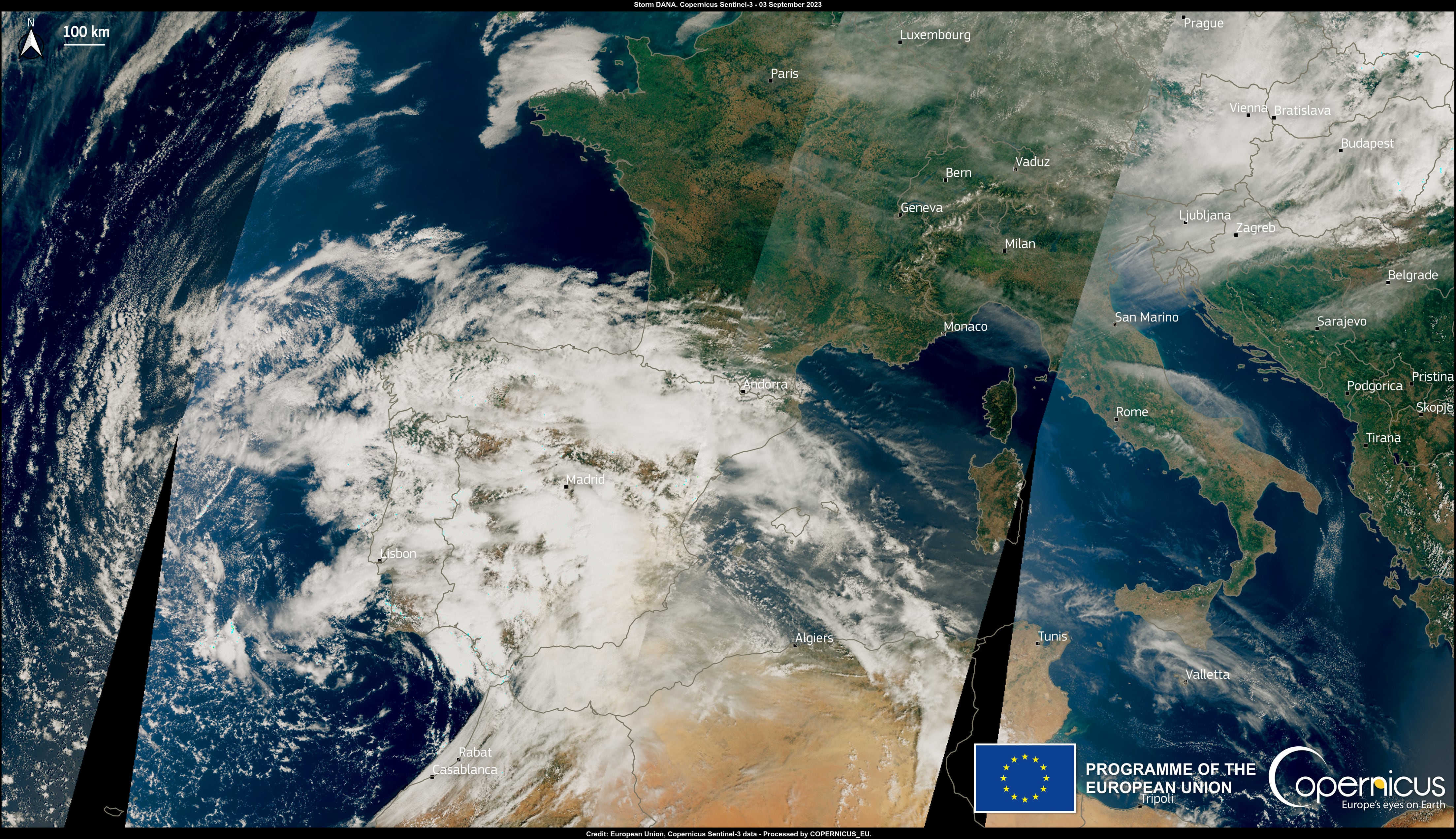“Well, you make me happy,” renowned meteorologist Ángel Rivera confessed by phone this Tuesday morning, upon learning from EL PAÍS that are word dana (acronym for isolated depression at high levels, a pocket of air in high layers of the atmosphere popularly known as cold drop) has just entered the Dictionary of the Spanish language along with spoiler, serum, teleworking and tabbouleh, among other terms. Immediately afterwards, Rivera asks if the Royal Spanish Academy (RAE) “has accepted dana in lower case” and the answer, happily, is yes. “Perfect, like that, perfect. The important thing is that we write it in lowercase as a cold front or storm, because, if it is in capital letters, it can be confused with a proper name and it is not, it is a phenomenon in meteorological jargon,” Rivera applauds. Immediately afterwards, the veteran expert, who was head of prediction at the State Meteorological Agency (Aemet) and its spokesperson throughout 38 years of public service before retiring in 2012, qualifies himself: “It is a joy, but relative, because I feel deep regret that a clean, white, technical, objective term has unfortunately ended up being associated with a terrible catastrophe that has left more than 200 dead.”
Asked what he thinks of the RAE’s definition of the word ―“The depression at high levels of the atmosphere that moves independently and can produce great disturbances with very intense precipitation”―, he does not like too much the tagline that “ “It moves independently.” “It is not outrageous, but it is not exactly like that, since it is independent of the main circulation, but it does have a connection with other secondary currents of the atmosphere of less importance, in fact it moves through said connection.” “What happens is that, at the time we named it, we didn’t have the satellites that we have now or almost any tools, so it seemed totally separate, but now we know that’s not the case.” Rivera, who was not consulted when drawing up this definition, describes dana as a phenomenon that occurs when “a very deep meander of the polar jet or general current at altitude is strangled.” There is also no evidence that the RAE has turned to Aemet experts to narrow down a word already accepted by the Fundéu in 2023.
It is hard to believe that the now ubiquitous dana, which is among the most searched on Google in 2024, is not even 40 years old. The expert says that the term arose within the former National Institute of Meteorology (INM, later Aemet) at the end of the eighties, although he does not remember the exact date, when they sought to end the use and abuse of the expression “cold drop.” ”, which they didn’t like at all. Cold drop is a translation from German Kaltlufttropfen which was introduced by meteorologists in Spain in the 1940s and “popularized in the 1950s by Mariano Medida on television.” The problem is that it was out of place in scientific articles as it was not a technical word and its use had been perverted. “Medina had very correctly used cold cold, but the term caught on to such an extent that, from the pantananda de Tous of 1982, any torrential rain or flood was being called cold rain and not all torrential rains are caused by a dana nor does a dana necessarily imply torrential rains, although its presence is a very important factor in triggering them,” explains the expert. .
Today the RAE has presented the news of the new update of the “Dictionary of the Spanish Language” in version 23.8.
Voices such as “barista”, “dana”, “espóiler” or “sérum” are incorporated into the work.
Learn more details: https://t.co/0cHDnQtjOe. pic.twitter.com/mlJl4BOVCp
— RAE (@RAEinforma) December 10, 2024
Thinking about the concept and the term in English, cutt-off low (separated or severed depression), they opted in Spanish for the adjective isolated and realized that dana could work as an acronym, adding “an important nuance” to the English expression, “at high levels of the atmosphere,” with the great fortune of that that word coincided with the surname of Francisco García Dana, head of the INM Analysis and Prediction Center who “had died two or three years earlier,” specifically in 1984 at the age of 60. “I came up with dana as a tribute to the surname of this historic master of predictors, who had been my mentor and Mariano Medina’s second in command,” Rivera recalls.
He was not alone in those deliberations. “We were a small group of five or six people, including Paco Martín and Ricardo Riosalido. We considered different possibilities and we liked Dana. It was at a somewhat later point when we realized that, incidentally, it was a memory of an excellent meteorologist,” adds Rivera. The funniest thing about the story is that padre of the dana, at that time one of the most complex phenomena to predict, he did not trust in its chances of catching on with the public and the media: “The truth is, I thought I was not going to be lucky.”
At Aemet it is also celebrated that the RAE has given its status to the term. “We think it is good that dana has entered the RAE, since its use is increasingly common and what the dictionary is dedicated to, precisely, is collecting common terms,” comments Rubén del Campo, Rivera’s successor as head of the Aemet spokesperson. As for the definition, they think it is a success, since “it makes it clear that a dana is an atmospheric phenomenon and distinguishes it from the effects it produces.” “That is to say: the dana is the cause (or one of the causes) of the torrential rains (possible effect), although these intense rains do not always occur when a dana arrives. In fact, for them to be produced, in addition to the presence of a dana, other ingredients are needed. And not always when there are torrential rains there is a damage present,” Del Campo emphasizes.

